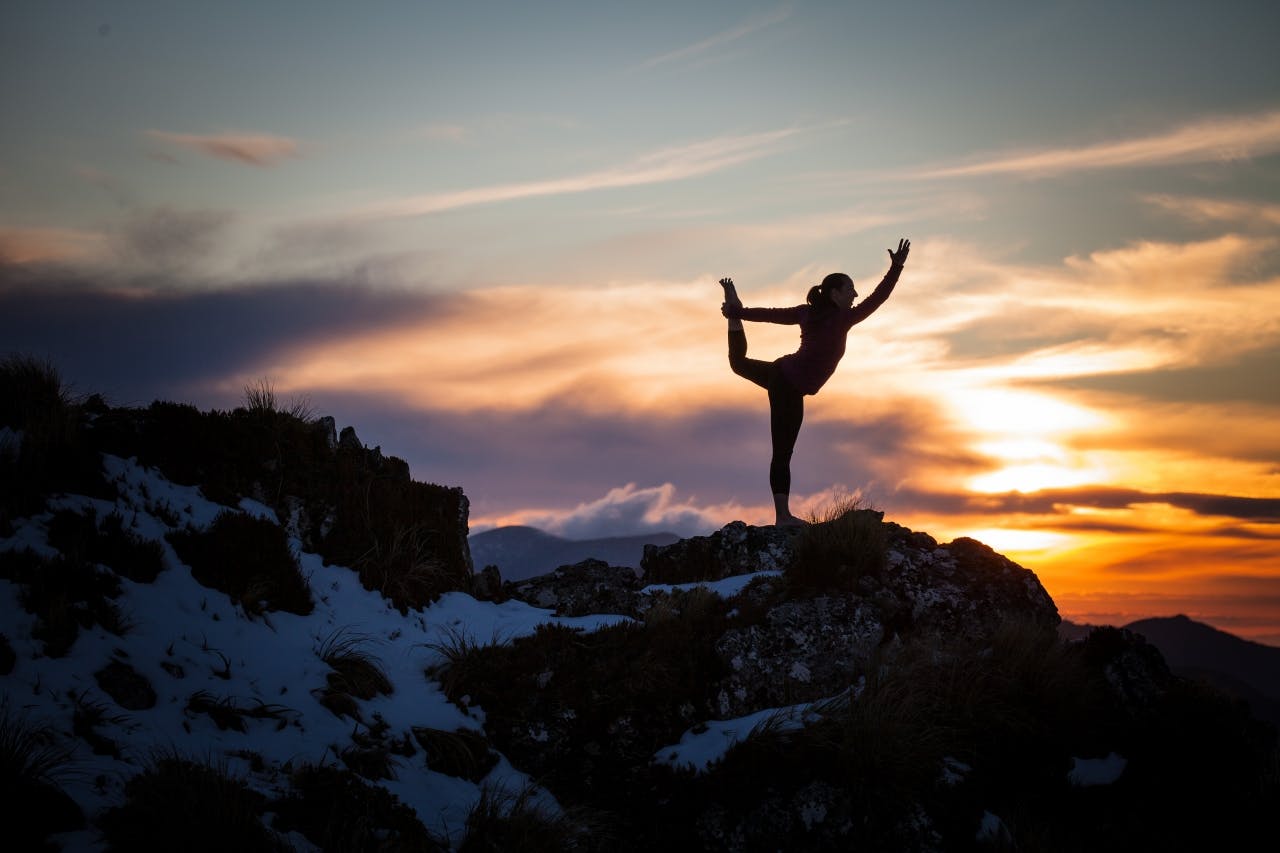Improve flexibility, strength and balance with these five yoga moves especially for trampers.
People are always touting the health benefits of yoga. Among other things, it can lower blood pressure, reduce stress, improve posture, relieve chronic pain and build bone strength to prevent osteoporosis.
Yoga provides specific benefits for trampers, too. Those tight hamstrings, calves and ankles after a tramp can all be relieved with the right yoga exercises. But it’s not just about stretching and improving flexibility. A number of poses also build strength in a low impact way through slow movement and holding of poses. This allows you to pay attention to aches and pains, avoiding exacerbating current injuries.
Yoga also incorporates a fair amount of balance, which can strengthen ankle and knee joints and improve your balance on tricky terrain.
Yoga also includes exercises that can help you learn to regulate your breath, making it easier to find a more relaxed breathing pattern when trudging up that 1000m peak.
The five poses here offer a mix of strength, balance and stretching ideal for walkers, trampers and mountaineers. Take your shoes off and practise them on the track or in a hut.
Every time you practise them, you’ll build a little more strength, balance or flexibility. You can move from one pose to the next in the order shown here or pick just one to work on. I
Lunge
Stretches the groin, hips, quadriceps
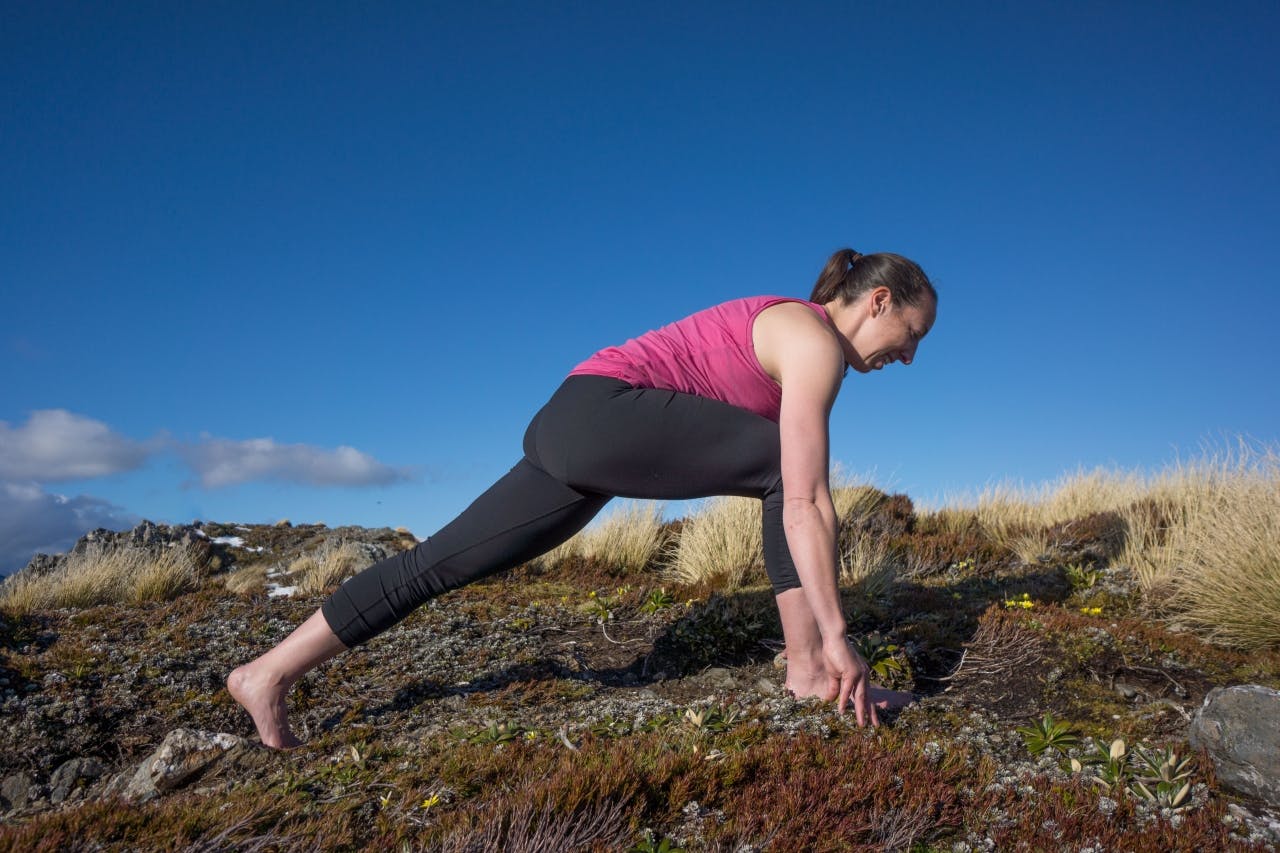
Lunge
- Start with your feet as wide as your hips
- Bend your knees deeply and reach your fingertips down to the ground. Take a big step back with your left foot
- Be on the toes of your left foot with your heel off the ground
- Your right knee should be over the top of the ankle or even behind it – do not let the knee go forward of your ankle
- Ease your hips and groin towards the ground as far as is comfortable for your body
- If this is challenging or too strong a stretch, bring your back knee down to the ground
- Stay in the pose for 3 to 5 breaths. Then step the back foot forward and change to the other side.
Wide legged standing forward bend
Stretches hips, hamstrings, ankles and groin; strengthens ankles, quadriceps and calves.
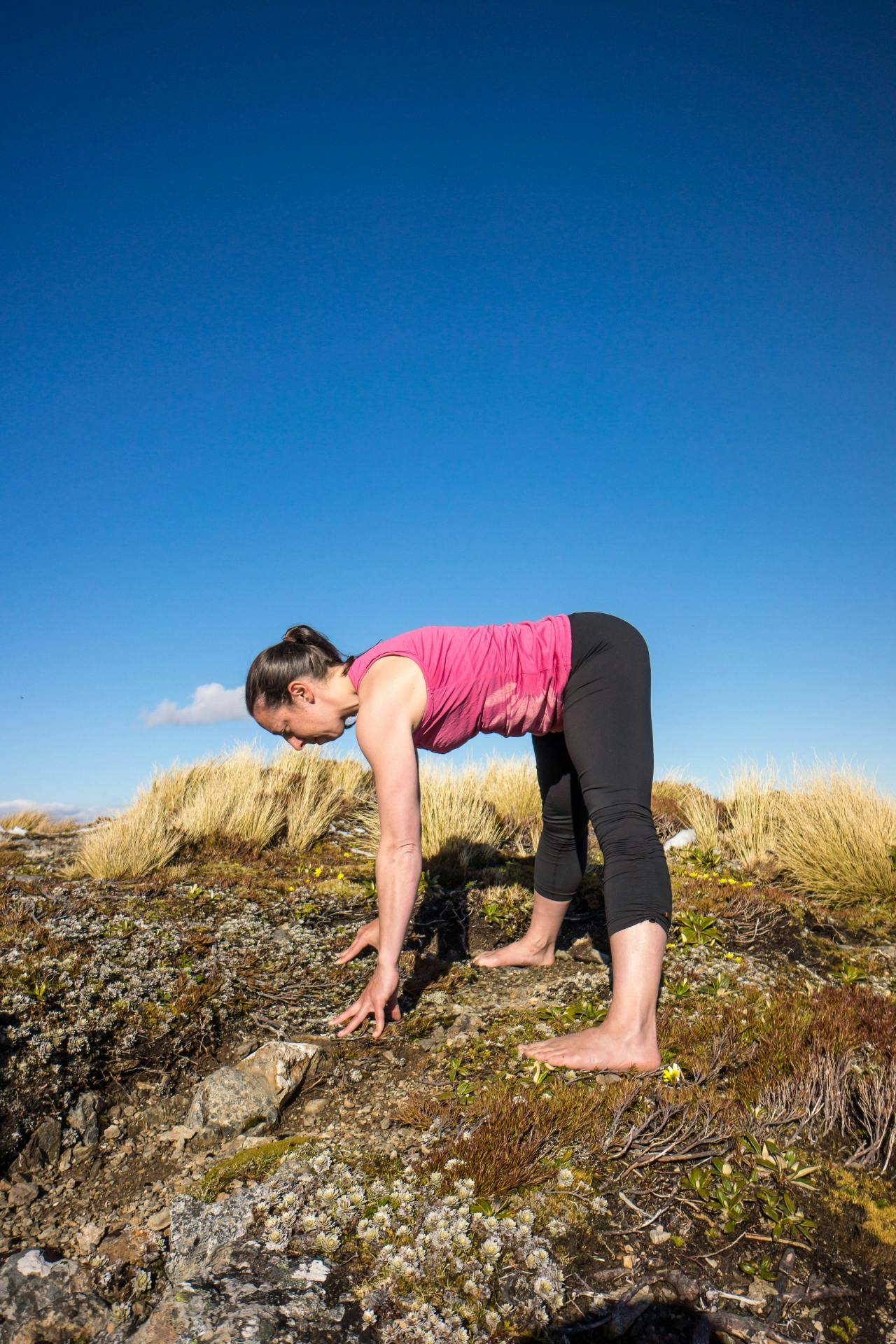
Wide Legged Standing Forward Bend
- Step your feet apart about the distance of one leg length
- Feet are parallel with toes pointing straight ahead. Press your feet evenly into the ground.
- Nearly straighten your legs, but be careful not to hyper-extend your knees. Try squeezing your thighs
- Hands to your hips. Lift up tall through your spine. Fold halfway forward so that your chest is level with your hips. Do not round the lower back. Reach your fingertips or hands to the floor. If
- this is difficult or you feel any strain in your back, place your hands on a table, chair or tree stump
- If your back and hamstrings feel OK, fold deeper, relaxing your head and bringing your chest closer to your thighs
- You should feel a stretch in your hamstrings and possibly in your groin (inner thighs)
- Stay in the pose for 3-5 breaths and if it felt comfortable, repeat the stretch again
- To come out of the pose, bring your chest up to the level of your hips, then bring your hands to your hips and raise your chest upright.
Triangle pose
Stretches and strengthens hips, hamstrings, calves and side abdominal muscles
Start with your feet about one leg-length apart
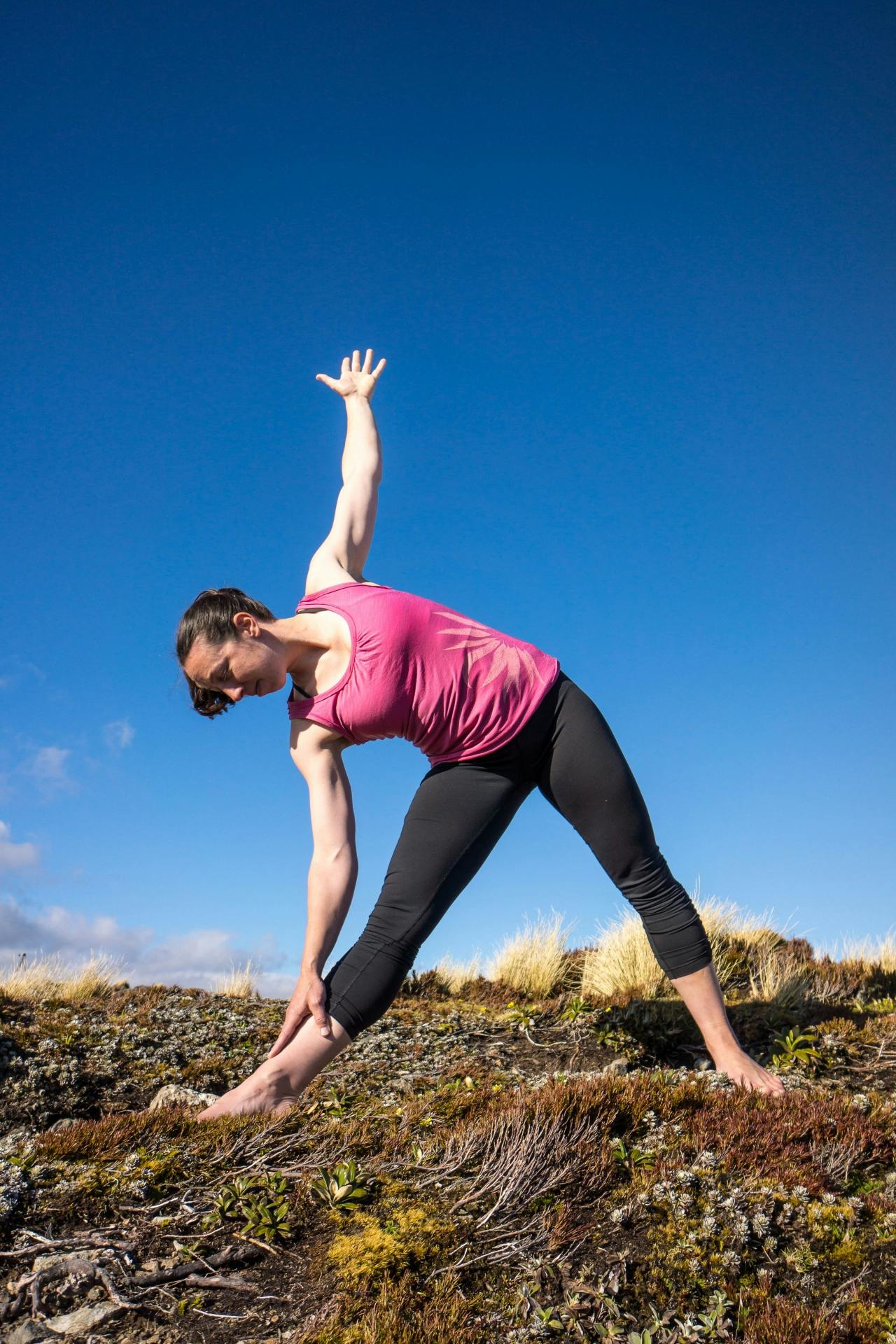
Triangle Pose
- Turn your right foot 90-degrees to the right. Turn your left toes slightly in to the right
- Both legs are nearly straight. Be careful not to hyperextend the knees. Tighten the right thigh by pressing down in the right big toe slightly
- Reach your arms out to the sides, palms facing down. Reach your right arm as far to the right as you can. Then hinge at your hips, reaching your right hand down to your shin, tip your chest as you move and lever your left hand up to the sky
- Try not to put all your weight in your right hand, just enough to balance. Look down at the ground for the easiest balance. Or look to the side or up to the sky – do not strain the neck
- Stay in the pose for 3-5 breaths
- To come out of the pose, bend the right knee slowly, hinge at the hips, lever your arms and chest back up. Then move to the other side.
Chair or powerful pose
Strengthens legs, especially thighs, calves and ankles; improves balance
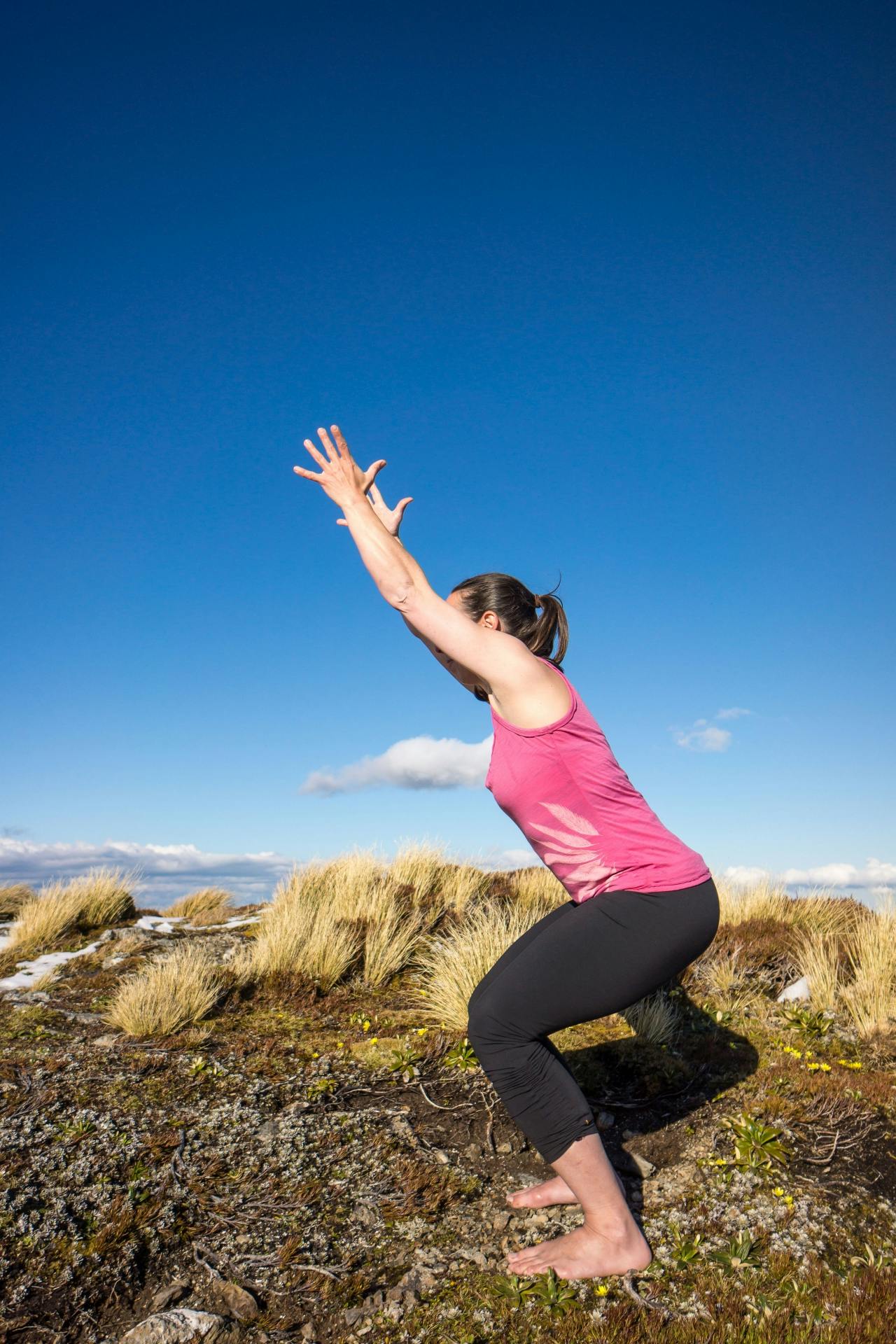
Chair or Powerful Pose
- Start with your feet apart, about as wide as your hips
- Feet are parallel with your toes straight ahead
- Hands on your hips. Bend your knees. Sit your hips back as if you are just about to sit down
- Keep a natural, slight curve in your lower back. Avoid rounding the back
- Make sure the knees are facing straight ahead
- Keep your feet evenly on the floor and then try pressing your heels out to the sides without actually moving the feet. This action will make you feel as if you are squeezing your thighs together, but don’t let the knees move
- To intensify the pose, reach your arms up alongside your ears
- Stay in the pose for 3-5 breaths and work your way up to 30 seconds or even a minute before resting and then repeating.
Tree pose
Improves balance; strengthens ankles and knee joints
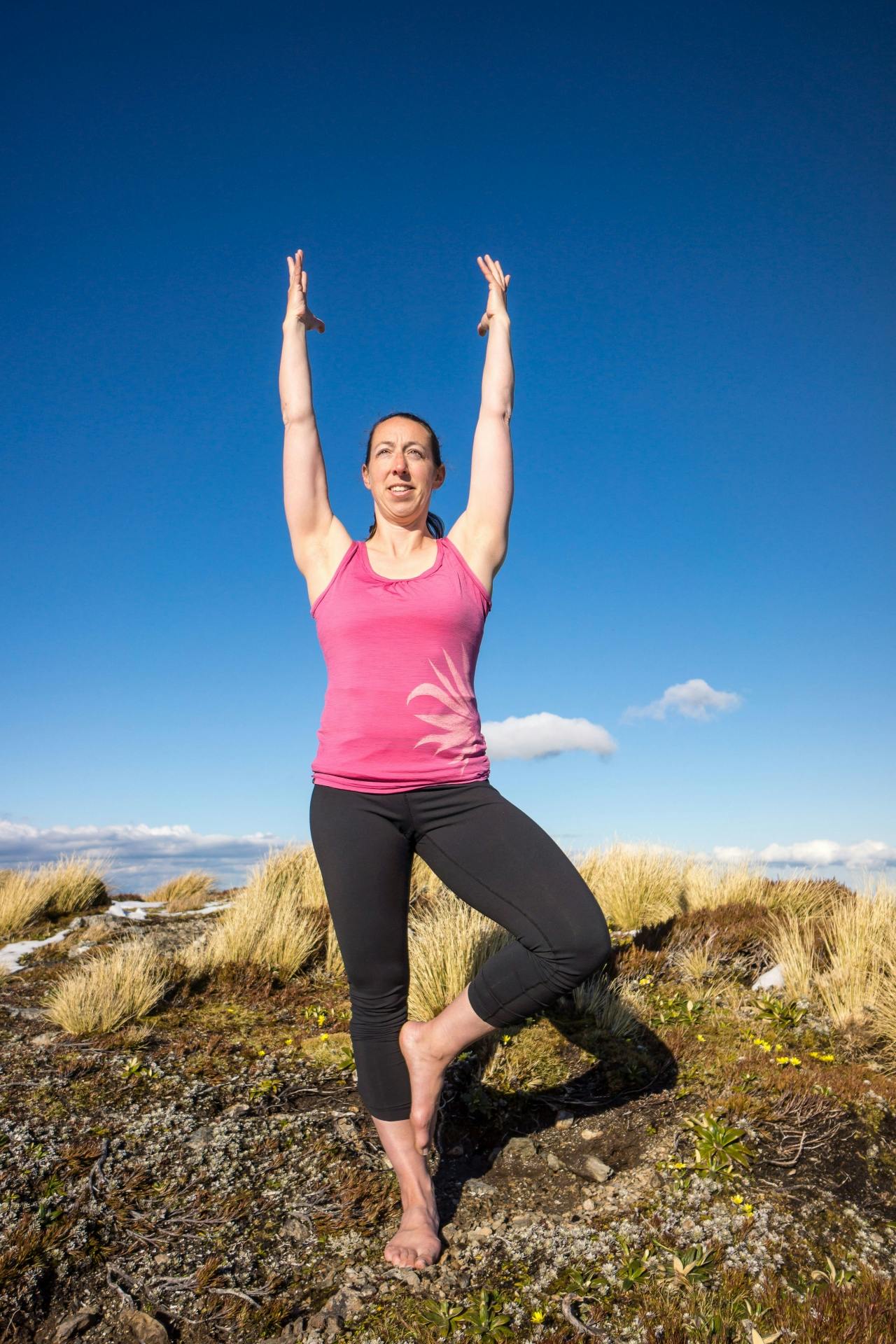
Tree Pose
- Stand with your feet slightly apart and parallel – toes straight ahead. Hands on the hips
- Focus on a spot on the ground about a metre in front of you – this will help your balance
- Bring the inside of your left foot to your other ankle, with the left toes on the ground
- If this is easy, then slide your left foot up to your calf. Stand tall through the right leg
- If this is easy, reach down with your left hand and bring the left foot to the right inner thigh. Lightly press the foot against the right leg while the right leg resists. Do not place the foot on the knee as this is dangerous for the knee joint
- To challenge your balance, look up to the horizon or sky, try closing one or both eyes or try lifting your arms up alongside your ears
- Step the foot down and change to the other side
- If it’s challenging to balance you can place your hand on a wall or tree
- Stay in the pose for 3- 5 breaths and work your way up to longer periods.






